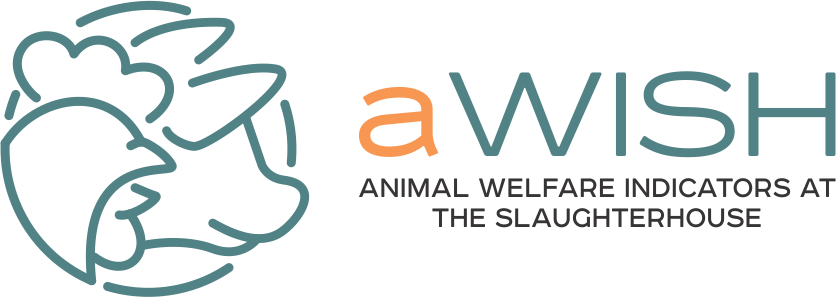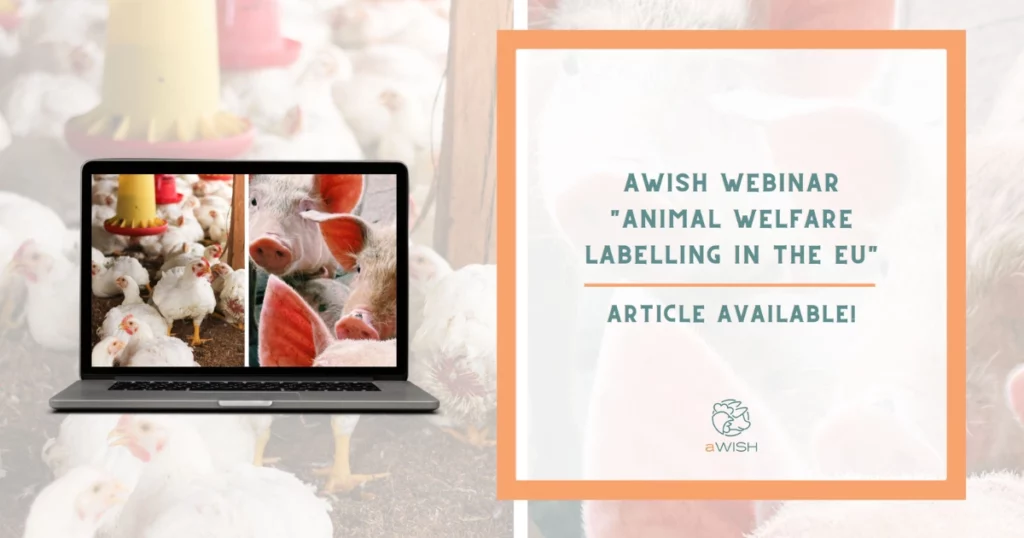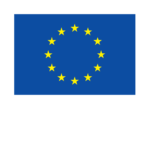Representatives from aWISH partner organisation, Eurogroup for Animals, and labelling organisations Étiquette Bienêtre Animal (France) and Beter Leven (The Netherlands) gave in-depth presentations exploring the current status of animal welfare labelling in the EU, the challenges faced, and how these can be addressed to provide clearer choices for consumers, and improved welfare for the EUs farmed animals.
Eurogroup for Animals introduced the jungle of labels in the EU and how consumers face 51 labelling schemes with animal welfare criteria. This leaves them confused and desperate for more information on the actual situation of the animals being farmed. For instance, according to the European Commission’s survey of EU consumers, two-thirds of consumers do not feel informed by labels regarding animal welfare, making informed choices an impossibility.
Eurogroup for Animals proposed the development of a mandatory ‘Method-of-Production Plus’ (MoP+) label. This label combines method-of-production marking with simple information on animal welfare based on a core set of animal welfare indicators. Method-of-production labelling has a proven track record, as its introduction for eggs in 2008, where all EU-produced and imported shell eggs must be labelled according to their production method (cage, barn, etc), led to a steady increase in hens being kept in alternative, non-cage systems.
An MoP+ label builds on this by grouping several aspects of animal welfare into a rating system that communicates clear information about the animal’s entire lifetime, including transport and slaughter, taking a core set of animal welfare indicators into account. For example, whilst the methods of production are used as a basis (e.g., indoors, indoors+, free-range, etc.), the plus layer will add criteria such as stocking densities, light regimes, and enrichment provisions to provide transparency on the level of welfare within each system. With this information, the consumer can access all necessary information on the animal’s life, from birth to death, to make an informed decision about the product.
Following the talk from Eurogroup for Animals, representatives of the Étiquette Bien-Être Animal label presented the voluntary animal welfare labelling scheme, which was developed in France to provide transparent, scientifically grounded information to consumers on the welfare conditions of animals used in food production. Étiquette Bien-Être Animal employs a multi-criteria evaluation framework to assign animal-based food products a score from A (highest welfare) to E (lowest acceptable welfare), based on performance across five domains: rearing conditions, health status, absence of mutilations, behavioural expression, and practices during transport and slaughter. The label was developed through a multi-stakeholder process involving NGOs, scientists, producers, and retailers, and it aims to incentivise continuous welfare improvements beyond baseline legal requirements. It uses market-based mechanisms to reward higher welfare practices, and its methodology incorporates input- and animal-based indicators to ensure a robust and comparative welfare assessment.
Étiquette Bien-Être Animal is responding to a growing demand for harmonised, transparent animal welfare communication and communicates complementary EU-level initiatives, such as the Farm to Fork Strategy and discussions on mandatory welfare labelling. While currently a voluntary initiative, the label provides a proof of concept for more structured and standardised welfare communication and may serve as a model for future regulatory frameworks at national or EU levels. It currently has species-specific standards for broiler, pigs and laying hens, and a wide reach. For instance, in 2024, the initiative was thought to cover about 40% of broiler farms and 15-20% of French production. The label represents a significant step towards integrating welfare performance as a value-added differentiator in the agri-food system, facilitating alignment between public policy objectives, supply chain practices, and consumer expectations.
Last in the webinar was a presentation from the Dutch label Beter Leven. The Beter Leven label was developed by the Dutch Society for the Protection of Animals and is a voluntary, multi-tier certification scheme for a wide range of farmed animals. The animal welfare certification scheme is designed to drive improvements for farmed animals beyond legislative baselines through market mechanisms and clear communication to consumers. The scheme is underpinned by science-based criteria for animal welfare and the Five Domains Model of welfare. It integrates input-based standards, such as space, enrichment, and lighting, and animal-based indicators, including behavioural expression and health indicators. Under the scheme, products are certified with one to three stars, reflecting increasing levels of animal welfare provisions.
The development and success of the Beter Leven label have been supported by coordinated action among government bodies, supermarkets, producer groups, and NGOs. The scheme aligns with the EU’s goal stated in the Farm to Fork strategy, namely, to integrate consumer welfare preferences into production systems and the promotion of voluntary uptake of higher welfare standards. The Beter Leven label now covers millions of animals annually, including pigs, laying hens, turkeys, rabbits, and dairy and beef cattle, and has high consumer recognition, demonstrating the feasibility of multi-tiered welfare labelling. For broilers, around 60% of Dutch broiler farmers are certified with the Beter Leven label, and in 2024, the main Dutch supermarkets announced that all of their fresh chicken would comply with 1-star Beter Leven label.
aWISH later hosted an internal webinar on the Tierschutzlabel “Für Mehr Tierschutz”, a two-tier voluntary welfare label developed by the German Animal Welfare Association. The scheme addresses farmed animal welfare across the production chain, including housing, transport, and slaughter, and is grounded in animal welfare science with species-specific standards. The Entry level exceeds legal requirements in Germany and the EU, and the Premium level goes much further, significantly enhancing animal welfare standards for farmed animals. The scheme also includes a distinct certification system that involves independently approved auditors, regular risk-based inspections, and traceability along the supply chain.
From a policy perspective, Tierschutzlabel offers a structured, scientifically grounded model for welfare labelling that aligns closely with the evolving EU objectives for transparency in consumer information. However, the label faces challenges from national frameworks in Germany, such as Haltungsform, a four-tiered system that focuses on animal housing systems, certifying products based solely on the production system (i.e., caged, barn, free-range etc) rather than considering the whole lifecycle of the animal, and factors such as stocking density and enrichment provisions. As a result, Haltungsform may give consumers a misleading impression that higher-tier products guarantee high overall animal welfare, when in fact they may only reflect better housing during part of the animal’s life. Also, in Germany, the upcoming Animal Husbandry Act (from August 2025) will make welfare labelling mandatory for certain products (specifically fresh pork from fattening pigs), requiring producers to register according to specific housing types. This will again lead to confusion for consumers and weaken more comprehensive schemes like Tierschutzlabel. Despite these obstacles, the Tierschutzlabel provides a comprehensive model that spans the entire supply chain, from on-farm practices to retail. It features robust oversight, active stakeholder involvement, and ongoing refinement of its technical standards. Both its successes and the barriers it faces offer valuable lessons for informing the development of a harmonised, EU-wide approach to animal welfare labelling.
All of these presentations on animal welfare labelling in the EU underscore both the urgency and opportunity for EU-level action on animal welfare labelling. As Eurogroup for Animals highlighted, the current landscape of animal welfare labelling is highly fragmented across 51 schemes, leaving EU consumers confused and unable to make informed choices. Eurogroup for Animals presented a promising solution, a mandatory MoP+ label, combining familiar production method categories with core animal welfare indicators to reflect an animal’s experience across the whole supply chain. This concept aligns closely with the underpinning principles of the labels: Étiquette Bien-Être Animal, Beter Leven, and Tierschutzlabel, all of which demonstrate the feasibility and opportunity for success using scientifically grounded, multi-tiered labelling systems that are based on stakeholder collaboration and robust assurance mechanisms. Whilst there are challenges with voluntary implementation and limited legislative support, these labels collectively offer a strong foundation and proof of market viability for an EU-wide MoP+ approach. Harmonising these efforts through a transparent, mandatory label could provide the clarity consumers seek and the incentives producers need to raise the welfare standards of farmed animals across the EU.


